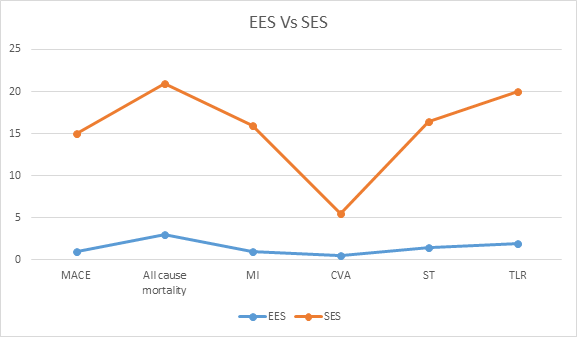
AM Thirugnanam
Virinchi Hospitals, India
Title: Comparison of new generation Everolimus eluting stents and new generation of Sirolimus eluting stents in chronic renal failure patients with 3 years outcome
Biography
Biography: AM Thirugnanam
Abstract
Background: This is follow up results of Use of new generation Everolimus and Sirolimus stents in chronic renal patients have been shown to reduce myocardial infarction, target vessel revascularization (TVR) and major adverse cardiovascular events (MACE), without increasing in bleeding risk in CKD patients.
Objective: Our aim to compare the safety and efficacy outcome between new generation Everolimus stent and Sirolimus eluting stents in patients undergoing PCI with New EES and SES.
Methods: We retrospectively analyzed 150 patients who underwent PCI in our centers, between August 2014 and August 2017. Patients were divided in to two groups: new EES (n=105) and new SES (n=45). Primary end points were at 1-year, 2-year, 3-year, composite of all cause of death, MI, CVA, TVR, MACE and stent thrombosis were also evaluated.
Results: Femoral access in 30% and 70% radial access were used. Rate of dual antiplatelet used 1 year were 96% in EES and 90% in SES. The primary end points occurred in 7% of EES and in 25% of SES. There were significant differences found with respect to the rate of 3 years all-cause mortality (3% vs 18%), MI (1% vs 15%), CVA (0.5% vs 5%), ST (1.5% vs 15%), TVR ( 2% vs 18%), MACE (1% vs 14%) and 2 cases of major bleeding were observed in SES patients and not in EES.
Conclusion: New EES stents shown very positive and encouraging results in CKD patients than new SES stents. This 3 years study may further be extended to evaluate very late events.


